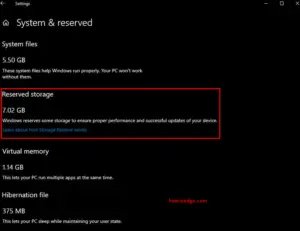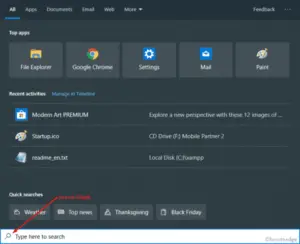Microsoft rolls out Windows Admin Center Preview 19H1 for Windows Insiders with some exciting new features and improvements. They have added new tools and functionality based on the feedback of top users. Some of the top requests were- email notification, active directory for users and groups, tool to manage DHCP and DNS and many others.
The Company has included email notification with the help of Azure Monitor Integration along with an option to search active directory in this build. Windows Admin Center 19H1 now supports multiple connections in addition to the use of wildcards in search. The rest are not included in this Preview, however, users can install them using the Extension Manager under Settings. Again as they are available in the form of extensions, they will receive regular updates as well. They have even improved the notification section so that users receive messages regarding extensions.
If you like having a dark user interface, you can get this feature from the personalization section under settings. Let’s explore this new release in detail-
General Changes and improvements
Here is the detailed walkthrough on new features and changes under Admin Center Preview 19H1-
1. Extension notifications
Microsoft eases out the process of searching and updating extension. They have included the following features-
- When users connect to a cluster or server, a notification will come into effect displaying the current hardware manufacturer and model. Whenever there is an update available for any extension, this will provide Specific information on how to implement the same. The Company will provide an extra option to turn off this feature as well in the upcoming release.
- Notification will appear only when there is an update available for existing tools or extensions.
Known issue: When you are using a desktop, it may suggest you contact Gateway Admin to install the update. They will solve this issue in the next release.
2. Active Directory
If you install Active Directory extension on your System, a respective tool will appear while connecting to a server. Here, you can do the following activities-
- View domain details like- DNS root, forest, domain mode, etc.
- Configure basic user properties, create users and group memberships.
- Create new groups and manage their membership.
- Search for computers, users, and groups (this is limited to 10 of each type in this release)
- View details pane for users, groups, and computers.
- Enable/ disable or simply remove user/ computer objects.
- Reset user passwords.
- Configure resource-based constrained delegation on a computer object.
You can visit the official website to configure single sign-on on your Windows Admin Center gateway deployment!
3. DNS
Users can install DNS using extension feed under Settings. If you connect to a DNS server after installing this, a DNS tool will come into view. Below is the list of different functionalities of this tool-
- You can view details of Reverse lookup zones, DNS forward Lookup zones and DNS records.
- You can configure Forward Lookup Zone properties such as dynamic updates, master servers, and zone file location. Users can create Forward Lookup zones in different types like- primary, secondary or stub.
- You may also be able to create Host (A or AAAA), MX type of DNS records, CNAME or configure DNS records properties like- FQDN, TTL, and many others.
- There is an option to create IPV4 and IPV6 Reverse Lookup zones in different types (primary, secondary and stub) as well. You may configure reverse lookup zone properties such as zone file name and location, Network ID, Master Servers, etc.
- You can also create PTR, CNAME type of DNS records under reverse lookup zone, configure DNS records properties such as HOST IP Address, FQDN, TTL, etc.
4. DHCP
Users can install DHCP similar to that of DNS using extension feed under local Settings. Its respective tool will appear after installation and connecting to the DHCP server. You can do the following activities using this-
- Configure scopes properties such as IP address range, create IPV4 and IPV6 scopes, Router, lease duration of DHCP client and Activate/Deactivate IPV4/IPV6 scopes
- View IPV4 and IPV6 scope details like- IP distribution status, address exclusions, usage of IP addresses and address reservations.
- Create address exclusions and configure the start and end IP address.
- Create address reservations and configure client MAC address (IPV4), DUID and IAID (IPV6).
5. Azure Monitor
The request for enabling email notifications from Windows Admin Center is much appreciated by Microsoft. With the onset of Admin Center Preview 19H1, users are now able to get this feature as integration with Azure Monitor. You can now receive custom email notifications for your server health with the help of its robust altering framework. Again as they are allowing 5 GB data free per month, users may try one or two servers without the fear of money deduction.
How to Set up your server for use with Azure Monitor
Although Microsoft has launched Windows Admin Center Preview 19H1 for registered insiders, there is a pending Azure API update. Owing to this, azure may not function properly. They have promised to bring this API update by the end of 29th March. You can follow these steps to set up your server-
- At first, go to the overview page of your server connection.
- Here, click on the Manage Alerts button thereafter navigate to the following path.
Server Settings --> Monitoring and Alerts
- Within this page, tap “Set up” to onboard your server to Azure Monitor.
The admin center will take care of positioning the Azure Log Analytics workspace by installing the required agent. This will also ensure to configure VM insights solution.
- Succeeding after, your server will send performance counter data to Azure Monitor.
- Now you are able to view or create email alerts based on your particular server using the Azure portal.
How to create email alerts on Azure Monitor
When you are done attaching your server to the Azure Monitor, browse to Settings > Monitoring and alerts > Azure portal using the intelligent hyperlinks.
Henceforth, the admin center will automatically collect performance counters, thus allowing you to set up a new alert using pre-defined queries. You can customize this to use your own writing as well.
How to get a consolidated view across multiple servers
If you are having multiple servers on a single Log Analytics workspace within Azure monitor, you can view all these servers using Virtual Machine Insight solutions.
However, you can access only the performance and map tabs of VM insights for Azure monitor. To view, health tabs function using Azure VMs, browse to the below-written path-
Azure Monitor > Virtual Machines (under Insights) > “Performance” or “Maps” tabs
Visualize apps, systems, and services connected to a given server
When the Admin center links a server to VM insight solution within Azure Monitor, it lights up Service Map too. This new function can automatically find apps components and maps the two service’s communication. The Azure portal thus helps you to visualize the connections between servers. To access this feature, navigate to the following path-
Azure portal > Azure Monitor > Virtual Machines (under Insights) > Maps tab.
Note: The above visualizations are available only in selected regions such as- East US, West Central US, Southeast Asia, and West Europe. To get these additional benefits, you must deploy a Log Analytics workspace on your System.
Known issues- Admin Center Preview 19H1
There are some known issues on this build as per Microsoft. They are as follow-
Azure Monitor: If you try using Azure Monitor on your System however receive an error, there may be some trouble in API update. Therefore, wait till this weekend as they will add the necessary patch-up on Azure by 29th March.
Virtual Machine Settings: You may get an error notification while changing the VM setting within a Fail-over cluster or a Hyper-converged connection. As VM resides on a server connection and changes the VM settings, try using the Hyper-V host.
Network: Don’t try to configure an azure network adapter otherwise this starts pointing to an invalid address. This occurs as the value under Microsoft Azure virtual network gateway address gets formatted during configuration.
Extension update notification: A notification might appear in desktop mode telling you to contact Gateway Admin to install the update. The Company will resolve this bug in the next release.
Azure Update Management On-boarding
You may receive a setting error while configuring Azure Update Management. This bug will get fixed along with Azure API change. In case you have already installed the MMA agent or wish to install the same using new Azure monitor integration, you may not be able to onboard the server to Azure Update Management using UI on Windows Admin Center.
If you have configured Azure update management using the Admin center, you can onboard the server to Azure Monitor virtual Machines.
Chrome 403 issue
Chrome users may face 403 forbidden response from WAC after upgrading their Systems. A workaround is already there in this release, just close *all* open chrome tabs (make sure to close all chrome.exe processes). After this, restart your chrome and this browser will start working normally. Users running multiple windows admin center tabs may not notice this bug or receive any such messages.
How to Download
This new release is only for registered Windows Insiders and they can download it directly using Windows Server Insider Download page. Here, you can find the same under the additional downloads drop-down menu. If you are not a registered insider, however, you want to get this update Windows Insider.
Microsoft encourages feedback from users and loves to hear what’s work and what’s not for users. If you have already installed and tried this release, you can send your valuable suggestion using this feedback.



